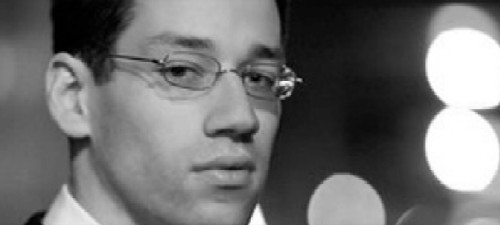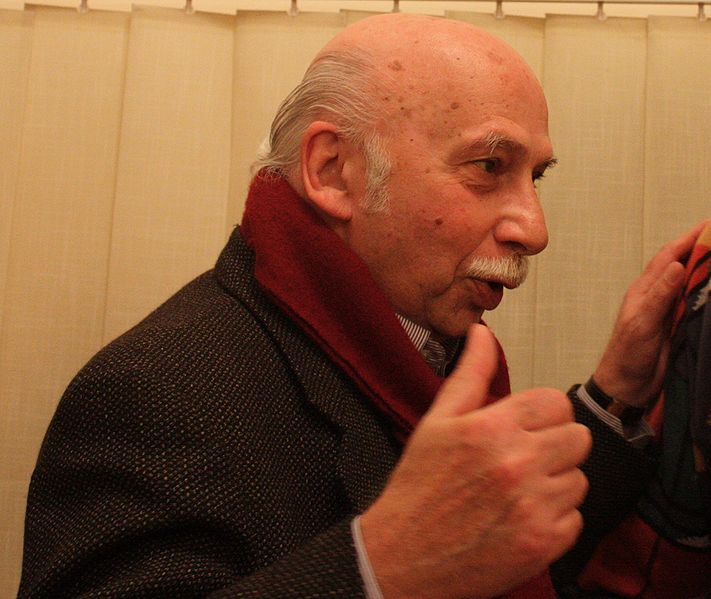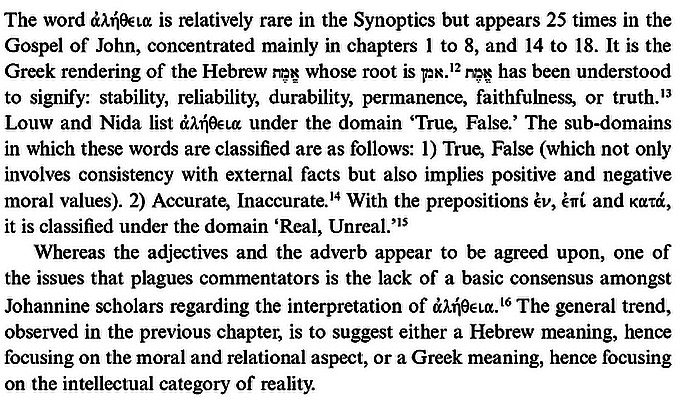
I ’ve done all-Mozart, all-Beethoven, all-Schubert programs, but there is always the danger of a stylistic sameness, or rather a lack of confrontation between the pieces. Concerts of works of two composers are great because they still offer enough music of each to create a sense of immersion in the composers’ sonic worlds, and yet the concert becomes a dialogue between the two, which often moves in surprising directions. The question of which composers work well together (and which don’t) is particularly alchemical, and I think it is one of both similarity and difference. The success of Beethoven and Janáček as a pairing relies in part on the terrific intensity that characterizes both... The intensity may be similar, but the language is utterly different... Beethoven’s sonatas are incredibly tightly argued... Janáček, by contrast, is perhaps the greatest master of the musical non-sequitur... Beethoven and Janáček could not be more different, which makes the similarities in temperament between the two all the more fascinating.”
— Jonathan Biss, 2012 essay.
N ot ‘non-sequiturs’ exactly. More like the worldview of
peoples who have for centuries lived along a
foggy seacoast and whose language now innately reflects their inability to see or predict what will loom into view in front of them from one moment to the next.
F orgetting, the renunciation of cause-and-effect and the obverse of forgiving. Beethoven afflicted with abject loss and despair (as in the Adagio of Op. 27 No. 2); Janáček surprised by optimism, welling up from where?
I just returned from Jonathan Biss’s Beethoven-Janáček recital at Kansas City’s
Folly Theater (Sonata No. 5, Op. 10, No. 1; Sonata No. 14, Op. 27, No. 2; Sonata No. 26, Op. 81a; V mlhách, JW 8/22; Sonata 1.X.1905, Z Ulice, JW 8/19).
T he ‘affective’ content and contrasts of these intense works—both the composers’ affect or psychological state and intentions, and the performer’s affect—are what makes the program spellbinding—emotionally compelling to experience (confirming what Biss has written in his essays; see blockquote above)!
T here may be elements that denote a similar state of mind or parallels in terms of Beethoven’s temperament and Janáček’s temperament, as Biss says. But the orderliness and certitude of Beethoven—contrasted with the randomness and the existential acceptance of doubt and uncertainy, even the recklessness of Janáček—these features make us think about our differences, not just the differences between these composers or their respective eras.
T hese antithetical qualities—and how such personalities or such ‘stances’ that we adopt influence what happens to us in life—are constitutional, innate, inherited styles. Well, they are partly inherited and partly learned/habitual.
E very mixture, every conciliation, every passage through the barrier of our inherited and habitual style is a transgression with self-discovery.
N ot every transgression is transcendent or momentous. Some of them are ironic, trivial, or tame—much like when a belovèd pet cat trips and experiences embarrassment at its clumsiness, so out-of-character and façade-dropping. Sometimes events bring out the best in us. We appear virtuous and do and express commendable things. At other times, our undesirable qualities come out.
A nd some transgressions are outrageous or transformative. Putting these two composers next to each other makes for an intense two-way street—stylistically and emotionally. This program forces/enables the two to ‘mediate’ each other’s views and to rhetorically critique the other.
I t is as though Biss has learned from literary theorist Roland Barthes and reveals the “hermeneutic code” that governs the semantics of each of the two composers’ worldviews, the “semiotic code” of the musical motives of each, the “proairetic code” that governs the formal structure (or, for Janacek, the renunciation of cause-and-effect structure), and the “referential code”—musical abstractions and metaphors and borrowings.
T he ‘next-to-ness’ Biss creates in formulating this program conjures the main forces that drive the narrative—and that drive our own desires to listen attentively.
T he “hermeneutic code” (see links below) refers to those plot elements that raise questions on the part of the reader of a text or the viewer of a film or the listener to a program of music. For example, in the Beethoven Op. 10, we get tragedy—the anxiety becoming mourning, weeping, descending (Movement 1, Theme 1, Phrase 1) leading to violence (Movement 3, Theme 1)—which leads us to wonder about the reasons for these traumatic events. Then, in the Janáček, we get a fatalistic indifference to a world in which cause-and-effect processes break down, or in which some events can’t be prevented or explained. We need the ‘loose ends’ of the narrative ‘tied up’ in order to feel satisfied, like a good detective story—and that is what Biss does for us by the end of the concert. The entire narrative of a story like this operates via hermeneutic encoding. We witness a murder, and we enthusiastically spend the rest of the concert learning answers to the questions that were raised by the initial Beethoven scenes of violence. That is one half of how this concert program works.
P roairetic code”, on the other hand, refers to ordinary actions—those musical phrases or plot events that simply lead to yet other phrases/consequences/actions. Suspense is driven by action rather than by a reader’s or a listener’s desire to have unsolved mysteries solved. This “proairetic code” is the other half of how or why this particular concert program works—event or ‘message-passing’ between the works, in a fashion resembling what happens with
remote procedure calls (
RPC) and
protocol buffers in software systems.
B iss’s idea of programming this seemingly-disparate-but-narratively-confrontational repertoire is really an excellent one—attractive, interest-holding, suspenseful—provoking us to reach a deeper understanding of the human condition, as well as deeper understanding of the mental states of two specific composers and of the nature of the works made to confront each other in this way. One could hardly wish for a higher form of “fun” than this. Bravo!
C an a piano work convey a bustling ‘severalness’, or the sense of many people congregated in a social gathering, as convincingly as a chamber work? I think so — parts of Schumann’s ‘Carneval’, Mussorgsky’s ‘Marketplace at Limoges’, and Ravel’s ‘La Valse’ spring to mind as trivial examples. One tempting view is that the composer is aiming to depict the entirety of the human condition: everything is in here and, just as in the real world, the profound and the banal are constantly rubbing shoulders. I don’t think this is wrong, but the truth may go further... By presenting a unified work in which the high and the low aspects of humankind are contained together, the composer invites the listener to find these worlds contained inside each other, not merely nearby. The piano sonatas may have a touch of this ‘adjacent’ humor—the riotous trio in the second movement of opus 110, or the manic dotted-rhythm variation in opus 111.”
— Jonathan Biss, 2012 essay.
- Jonathan Biss website
- Beckerman M. Janáček and His World. Princeton Univ, 2003.
- Beckerman M. Janáček as Theorist. Pendragon, 1994.
- Katz D. Janáček beyond the Borders. Univ Rochester, 2009.
- Tyrell J. Janacek: Years of a Life. Vol. 1. Faber & Faber, 2006.
- Barthes R. S/Z. Hill & Wang, 1975.
- Barthes R. ‘The Third Meaning’ and ‘Rasch’, in Responsibility of Forms: Critical Essays on Music, Art, and Representation. Univ California, 1985.
- Proairetic code page at Cyberartsweb.org
- Hermeneutic & Proairetic Codes page at Purdue Univ
- Muñoz-Calvo M, et al. New Trends in Translation and Cultural Identity. Cambridge Univ, 2008.
- Wałaszewkska E, et al., eds. Relevant Worlds: Current Perspectives on Language, Translation and Relevance Theory.Cambridge Univ, 2008.
- Andrews G. Concurrent Programming: Principles and Practice. Addison Wesley, 1991.
- Hansen P, ed. The Origin of Concurrent Programming: From Semaphores to Remote Procedure Calls. Springer, 2002.
- Hoare C. Communicating Sequential Processes. Prentice-Hall, 1985.






 It was an interesting weekend for the discerning Sportsman. Friday evening I attended the boxing matches at Resorts Casino in Atlantic City. The Card was presented by KEA boxing and featured a solid 2nd round KO by Juan"The Beast" Rodriguez. The Beast caught opponent Crabtree on the chin and dispatched the kid to the canvas...he was out cold for about 30 seconds and the fight was over. There were several other competitive and entertaining bouts on the card. Unfortunately, after the fights I fared about as well as Crabtree on the Craps table and was KO'd by the Croupier's call of "Seven Out" more times than I would like to admit.
It was an interesting weekend for the discerning Sportsman. Friday evening I attended the boxing matches at Resorts Casino in Atlantic City. The Card was presented by KEA boxing and featured a solid 2nd round KO by Juan"The Beast" Rodriguez. The Beast caught opponent Crabtree on the chin and dispatched the kid to the canvas...he was out cold for about 30 seconds and the fight was over. There were several other competitive and entertaining bouts on the card. Unfortunately, after the fights I fared about as well as Crabtree on the Craps table and was KO'd by the Croupier's call of "Seven Out" more times than I would like to admit.



























